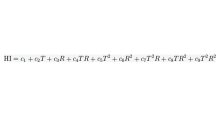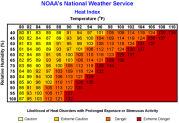Heat can be a killer -- and it has. We think of hurricanes or tornadoes as being the biggest weather threats around here, but the biggest death toll was from a heat wave. In 1993, 118 people died in Philadelphia from heat-related problems. It was even worse in Chicago a couple of years later, 1995. That heat wave killed nearly 500 people. But those numbers pale in comparison to ones overseas in recent years.
In 2003, a heat wave in Europe killed more than 70,000 people. No, that’s not a typo -- 70,000! France alone lost about 15,000. And in 2010, Russia (yes, Russia) had a heat wave that supposedly killed 55,000 people or more.
It’s very hard to count the number of heat-related deaths. If someone died in a hot row home from a heart attack, was it at least partially caused by heat? A common way to do it these days is to know the average number of people who die in a day. Then any amount above that average is assumed to be heat-related.
Heat deaths don’t generally come from just a couple of hot days. It’s the buildup of heat over a period of many days. And the nights are every bit as important. For example, if the temperature is able to drop to near 70 at night, the heat danger will be much less than if it only goes down to 80. That’s true even if the afternoon temperature and humidity are the same for both days.
The buildup of heat is easier in a brick house with no air conditioning. Those brick row houses in Philadelphia are more like ovens in an extreme heat wave. Lack of air conditioning was a big factor in those high Europe & Russia heat disasters.
IS IT THE HEAT OR THE HUMIDITY?
The old saying: “It’s not the heat-it’s the humidity” is generally true. Of course, there isn’t a threat unless we start with high temperatures. But if you have ever been to a place like Las Vegas or Phoenix, even a 110 degree temperature day doesn’t feel as bad as some days here. The best way to compare heat dangers is with the HEAT INDEX, which combines temperature and humidity.
People sometime ask me for the formula to calculate the heat index. Well, my answer is the same as I give them for “wind chill”: “You don’t really want to know”. Here’s why:

Still want to know it? Instead, we have nice, colorful tables where you can look up the temperature on one column and the humidity in the other. Here is what those numbers mean regarding the actual danger:
Local
Breaking news and the stories that matter to your neighborhood.
80—91 °F -- Caution: fatigue is possible with prolonged exposure and activity. Continuing activity could result in heat cramps.
90—105 °F -- Extreme caution: heat cramps and heat exhaustion are possible. Continuing activity could result in heat stroke.
105—130 °F -- Danger: heat cramps and heat exhaustion are likely; heat stroke is probable with continued activity
Over 130 °F -- Extreme danger: heat stroke is imminent

The heat index this week has reached up to 105 in Philadelphia and nearly 110 in Dover. While those are high numbers, they are far from the ones we experienced 5 years ago in 2010. The temperature reached 103 and the heat index got to 119 degrees. In Philadelphia. Here’s a chart, courtesy of meteorologist Jim Eberwine, showing the temperature and heat index for July 20-25th. How high can the Heat Index get? Appleton, Wisconsin once had a HI of 148 degrees! Worldwide, the highest I could find was 176 degrees in Dhahran, Saudi Arabia! Not so dry in that desert.



